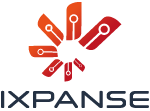Leveraging Hybrid Cloud Solutions: The Best of Both Worlds
Hybrid Cloud vs. Public and Private Clouds: What’s Right for Your Business?
When exploring cloud strategies, businesses are often faced with three main options: public cloud, private cloud, and hybrid cloud.
- Public Cloud: Offers scalability and cost savings, but may not always meet regulatory or security requirements for highly sensitive workloads.
- Private Cloud: Provides greater control and stronger security, making it ideal for regulated industries, but it comes with higher costs and limited scalability.
- Hybrid Cloud: Combines the strengths of both models, balancing flexibility, security, and cost efficiency.
A hybrid cloud allows organizations to decide strategically where workloads and data should reside. Critical information can be stored in private cloud environments, while less sensitive, highly scalable applications can run in the public cloud.
Benefits of a Hybrid Cloud Approach for Flexibility and Security
The hybrid model is gaining momentum because it delivers both operational agility and robust security:
- Flexibility: Businesses can shift workloads to the public cloud during peak demand and scale down during slower periods.
- Security: Sensitive data remains in private cloud environments, ensuring compliance with data protection laws such as GDPR and KVKK.
- Cost Management: Companies pay only for the resources they consume, optimizing IT budgets.
- Performance Optimization: Mission-critical applications run in the most suitable environment to maximize availability and efficiency.
At Ixpanse Teknoloji, we see hybrid cloud as more than a technical solution-it is a strategic enabler for modern businesses.
Key Factors to Consider When Adopting Hybrid Cloud
While the hybrid model offers significant advantages, success depends on careful planning and execution. Businesses should evaluate the following factors:
- Integration: Seamless interoperability between public and private environments is essential.
- Visibility and Monitoring: Centralized monitoring tools should provide a unified view of workloads across environments.
- Security Policies: Consistent security standards must be enforced in both public and private clouds.
- Compliance: Hybrid strategies should align with regulatory frameworks, including GDPR, KVKK, and industry-specific requirements.
- Vendor Management: Multi-cloud and hybrid environments require careful provider coordination to avoid dependency risks.
Addressing these considerations ensures that hybrid cloud strategies remain sustainable, efficient, and compliant.
How Hybrid Cloud Improves Disaster Recovery and Data Backup
One of the strongest use cases for hybrid cloud is disaster recovery (DR) and data backup.
- Redundancy: Data can be replicated across environments, reducing the risk of single points of failure.
- Rapid Recovery: Public cloud resources can be leveraged for quick restoration in the event of unexpected downtime.
- Cost Efficiency: Instead of investing in a dedicated disaster recovery data center, companies can rely on hybrid cloud solutions for lower costs.
- Flexibility: Businesses can customize backup policies, using more frequent backups for critical data and less frequent cycles for secondary workloads.
By combining resilience with cost savings, hybrid cloud enables companies to strengthen business continuity without overextending budgets.
Conclusion
Hybrid cloud solutions bring together the best of both worlds, allowing businesses to optimize cost, performance, and security. By strategically balancing public and private resources, organizations gain the agility needed for growth while protecting sensitive data.
At Ixpanse Teknoloji, we help companies design and implement hybrid cloud strategies tailored to their unique needs. Our approach ensures that flexibility, scalability, and compliance work hand in hand, empowering businesses to stay competitive in a rapidly evolving digital landscape.




